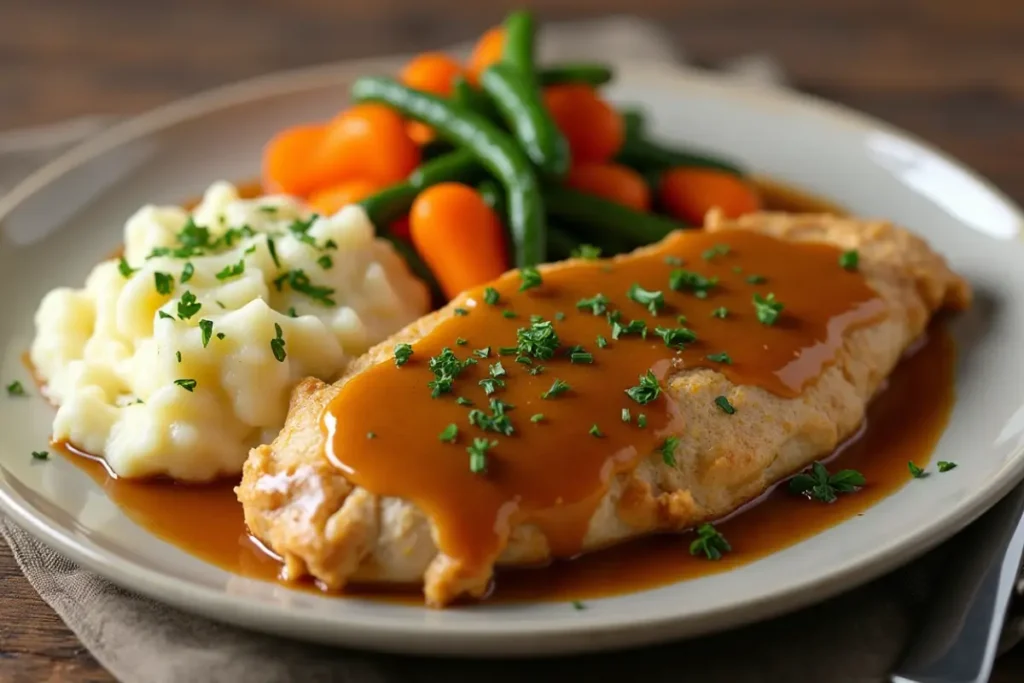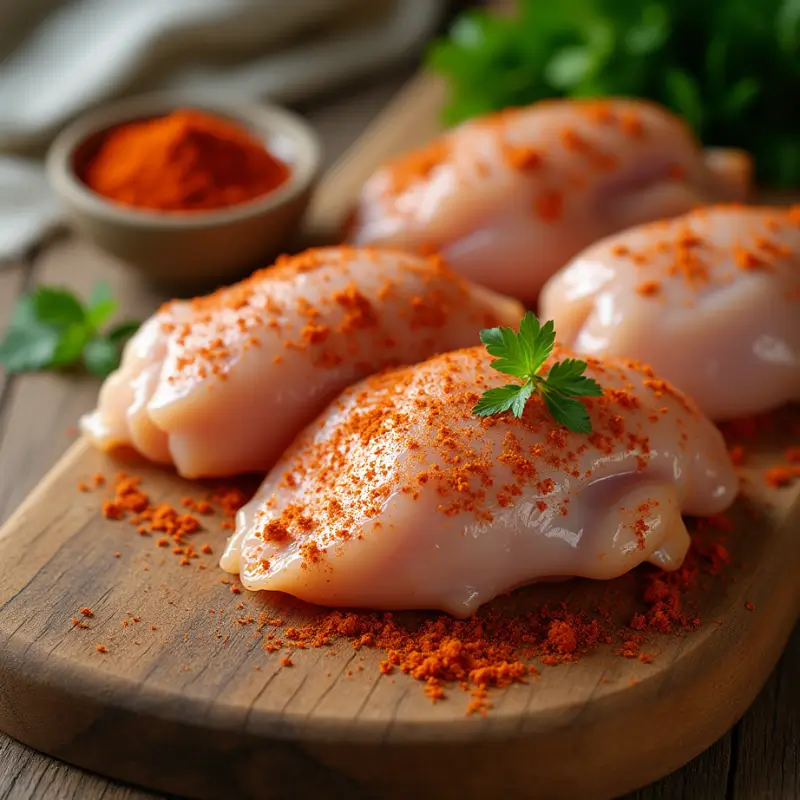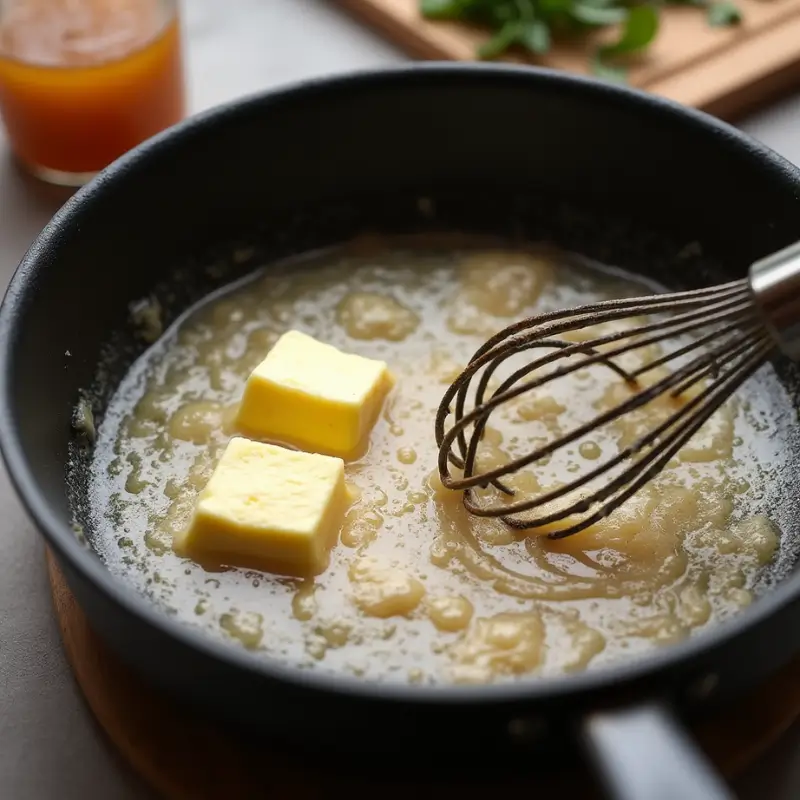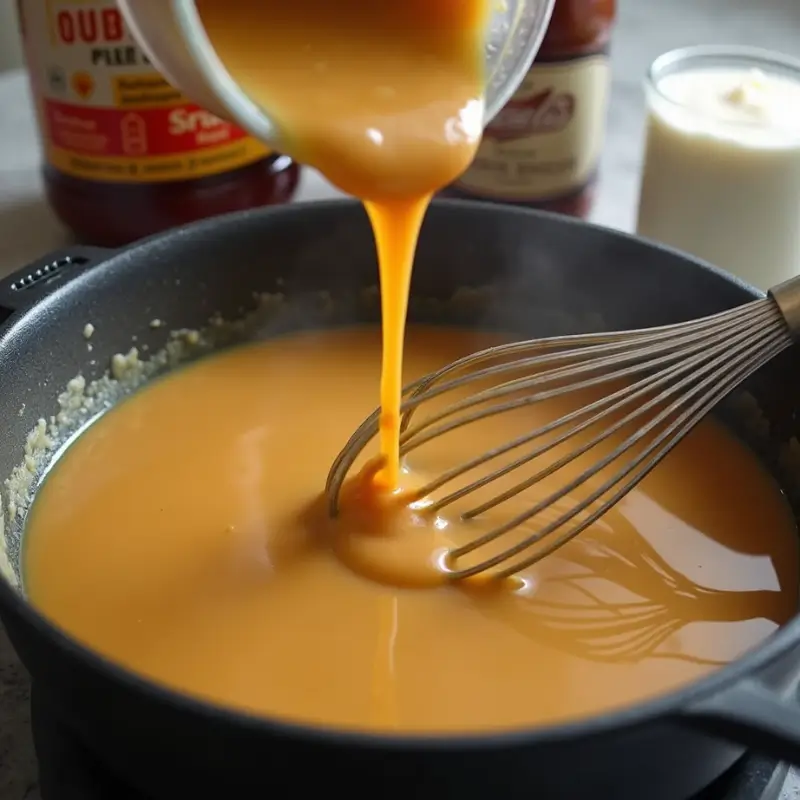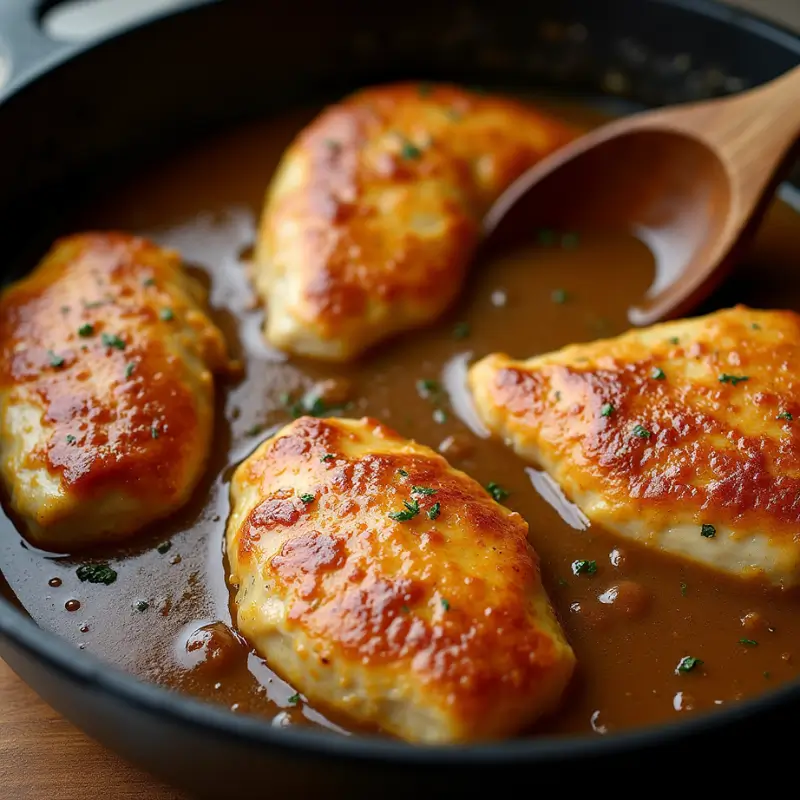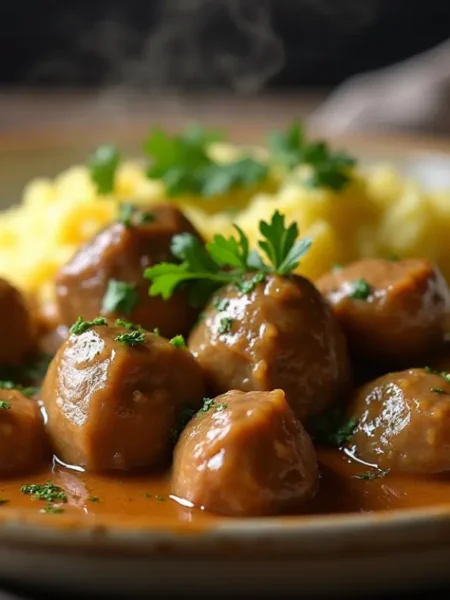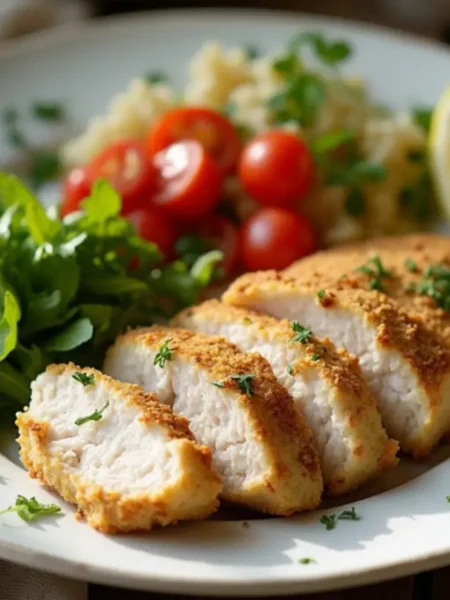Chicken and gravy is the kind of dish that wraps you in a warm embrace, conjuring images of family gatherings and cozy evenings. It’s a meal that speaks to the heart, evoking memories of Sunday dinners and the soothing rhythm of a kitchen filled with the sizzle and aroma of a meal in the making.
The succulent chicken, bathed in a rich and velvety gravy, is a classic comfort food that has been a staple in kitchens around the world. This dish is an ode to the beauty of simplicity, where humble ingredients come together to create something truly special.
Table of Contents
The Origins of Chicken and Gravy
A Global Affair
Chicken and gravy have a storied history, transcending borders and cultures. From the hearty chicken fricassée of France to the spicy chicken curries of India, this dish has as many variations as there are cooks who make it.
Each culture has taken the basic concept of meat in a flavorful sauce and adapted it to local palates and available ingredients. In the United States, chicken and gravy have become synonymous with Southern cooking, where it’s often served over biscuits or mashed potatoes, creating a meal that’s as comforting as it is satisfying.
From Humble Beginnings
The roots of chicken and gravy can be traced back to times when resourcefulness in the kitchen was essential. In the days before refrigeration, nothing went to waste. A chicken would be used in its entirety, with the bones simmered to make stock.
The rendered fat was used to create a luscious gravy. This was a dish born out of necessity, designed to stretch ingredients and create a meal that was both nourishing and economical. Over time, what began as a practical solution evolved into a beloved culinary tradition, cherished for its simplicity and depth of flavor.
The Art of Creating Flavor
The Role of Ingredients
The beauty of chicken and gravy lies in its ability to transform a few basic ingredients into something extraordinary. At its heart, this dish is about the quality of its components. The chicken, whether a whole bird or just the parts, should be fresh and preferably free-range to impart the most flavor.
The gravy, a seemingly simple concoction, is where the magic truly happens. It’s a symphony of flavors, with each note carefully balanced to create harmony. The base of the gravy often includes onions, garlic, and herbs, which are sautéed until golden, releasing their fragrant oils and forming the foundation of the dish.
The Richness of the Gravy
Creating a perfect gravy is both an art and a science. It’s about understanding the interplay of fat and flour, and the alchemy that occurs when they’re combined. The fat, which can be from the chicken drippings or added butter, forms the backbone of the gravy, providing depth and richness.
The flour, added to the fat, is cooked until it reaches a nutty brown, creating a roux that thickens the sauce without overwhelming it. This step is crucial, as it determines the gravy’s texture and flavor. Once the roux is ready, it’s slowly whisked into a warm broth, gradually building the gravy to its desired consistency.
Techniques and Tips for Perfection
Cooking the Chicken
The method of cooking the chicken is pivotal to the success of this dish. Whether roasted, pan-seared, or braised, the goal is to achieve a balance between tender, juicy meat and a deeply flavored exterior.
For a traditional approach, many opt to brown the chicken in a skillet, rendering the fat and creating a fond—those caramelized bits that form on the bottom of the pan. This fond is a treasure trove of flavor, and when deglazed with liquid, it becomes an integral part of the gravy.
The Secret to Silky Gravy
A great gravy is smooth and velvety, without a hint of lumps or graininess. To achieve this, patience and attention to detail are key. The broth is added to the roux slowly, whisking continuously to ensure a seamless blend.
It’s important to allow the gravy to simmer gently, giving the flavors time to meld and the sauce to thicken to perfection. A final flourish of cream or a pat of butter can be whisked in at the end, adding a luxurious finish and a glossy sheen.
The Emotional Connection
Why We Love Chicken and Gravy
There’s something inherently comforting about chicken and gravy. Perhaps it’s the way it speaks to our senses, with its savory aroma and rich, satisfying flavors. This dish is more than just food; it’s a connection to our past and a celebration of the simple pleasures of life.
It reminds us of family dinners and the comforting rituals of home. Even in the hustle and bustle of modern times, there’s value in slowing down and savoring a meal made with love.
Inviting You to the Table
Chicken and gravy are more than a dish—they’re an invitation to gather around the table, share stories and laughter, and create new memories. It’s a dish that encourages experimentation, allowing you to put your own spin on a classic.
Whether served over biscuits, with a side of mashed potatoes, or alongside a medley of seasonal vegetables, it’s a meal that brings people together.
In the end, chicken and gravy are about more than just eating. They’re about the joy of cooking, the warmth of family, and the satisfaction of a meal well-made. So, roll up your sleeves, gather your ingredients, and let’s get cooking.
After all, the heart of any home is the kitchen, and there’s no better way to fill it with love than with a pot of chicken and gravy simmering on the stove.
Chicken and Gravy: A Classic Comfort Dish Made Easy
Description
Savor the nostalgic flavors of tender chicken smothered in homemade gravy—a comforting delight that’s both quick and easy to prepare, ideal for any cozy gathering.
Ingredients
For the Chicken
For the Gravy
Instructions
Preparing the Chicken
-
Season the Chicken
Generously season both sides of the chicken pieces with salt, pepper, and a pinch of paprika for a subtle smoky flavor.Let the seasoned chicken rest for about 10 minutes to absorb the flavors. -
Sear the Chicken
Heat a tablespoon of olive oil in a large skillet over medium-high heat. Once hot, place the chicken skin-side down. Cook until the skin is golden brown, about 5-7 minutes.Don't rush this step; a well-seared skin adds flavor and texture to the dish.
Making the Gravy
-
Create the Roux
Remove the chicken from the skillet and set aside. In the same skillet, add two tablespoons of butter, scraping up any browned bits from the bottom. Once melted, whisk in two tablespoons of flour.This step is crucial for a smooth, lump-free gravy. Keep stirring until the mixture turns a light golden brown. -
Add the Stock
Gradually pour in two cups of chicken stock, whisking continuously to prevent lumps. Reduce the heat to low and let the gravy simmer until thickened.For a richer flavor, add a splash of cream or a drizzle of Worcestershire sauce.
Combining and Serving
-
Return the Chicken to the Gravy
Nestle the chicken pieces back into the skillet, ensuring they are well-coated with the gravy. Cover and let simmer for an additional 10-15 minutes until the chicken is cooked through.The chicken should reach an internal temperature of 165°F. Use a meat thermometer for accuracy. -
Serve and Enjoy
Serve the chicken hot, generously ladled with the delicious gravy. Pair with mashed potatoes or steamed vegetables for the ultimate comfort meal.Garnish with freshly chopped parsley for a pop of color and freshness.
Nutrition Facts
Nutrition Facts
Servings 4
- Amount Per Serving
- Calories 466.21kcal
- % Daily Value *
- Total Fat 17.75g28%
- Saturated Fat 5.97g30%
- Trans Fat 0.01g
- Cholesterol 217.42mg73%
- Sodium 877.12mg37%
- Potassium 1048.25mg30%
- Total Carbohydrate 7.61g3%
- Dietary Fiber 0.22g1%
- Sugars 1.91g
- Protein 64.76g130%
- Vitamin A 74.57 IU
- Vitamin C 0.4 mg
- Calcium 22.04 mg
- Iron 1.52 mg
- Vitamin E 2.22 IU
- Vitamin K 3.37 mcg
- Thiamin 0.32 mg
- Riboflavin 0.6 mg
- Niacin 28.24 mg
- Vitamin B6 2.28 mg
- Folate 32.02 mcg
- Vitamin B12 0.58 mcg
- Phosphorus 619.16 mg
- Magnesium 82.9 mg
- Zinc 2.06 mg
* Percent Daily Values are based on a 2,000 calorie diet. Your daily value may be higher or lower depending on your calorie needs.
Note
For chicken and gravy, begin by seasoning your chicken generously with salt, pepper, and a touch of paprika for warmth. Browning the chicken in a mix of butter and olive oil will create a luscious fond on the pan. This fond is gold—scrape it up with some chicken stock to form the base of your gravy.
Use a mix of fresh herbs like thyme and rosemary for aromatic depth. If you're out of fresh, dried herbs will do, but halve the amount as they're more potent.
When making the gravy, slowly whisk flour into the drippings to prevent lumps, then gradually add more stock, stirring constantly. Simmer until the gravy thickens to coat the back of a spoon.
For extra richness, whisk in a splash of cream or a knob of butter at the end.
If you prefer a gluten-free option, substitute the flour with cornstarch. Remember to dissolve cornstarch in cold water before adding it to avoid clumping.
For reheating, do so gently over low heat to prevent the gravy from splitting. If necessary, add a bit more stock or water to maintain a smooth consistency. Pair with mashed potatoes, rice, or roasted vegetables for a complete meal.

